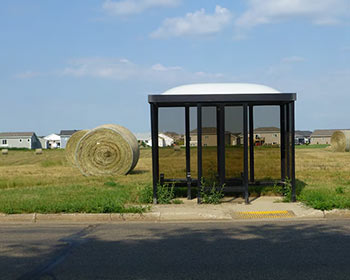Researchers Complete Assessment of North Dakota Mobility Options, Transit Needs and Characteristics for Users
Posted: Dec 8, 2020
 Researchers with UGPTI's Small Urban and Rural Center on Mobility have completed the study, "Assessment of North Dakota Mobility Options, Transit Needs and Characteristics of Users," for the N.D. Department of Transportation. The study analyzed population and demographic trends in North Dakota to identify areas with the greatest current needs for mobility services and areas expected to have the greatest increases in demand.
Researchers with UGPTI's Small Urban and Rural Center on Mobility have completed the study, "Assessment of North Dakota Mobility Options, Transit Needs and Characteristics of Users," for the N.D. Department of Transportation. The study analyzed population and demographic trends in North Dakota to identify areas with the greatest current needs for mobility services and areas expected to have the greatest increases in demand.
This study also meets the needs of section 10 of HB 1012, passed by the North Dakota State Legislature in 2019, which called for the North Dakota Department of Transportation (NDDOT) to study public transportation services within the state.
The study showed that public transportation in North Dakota serves riders who are mostly low income. Many have a disability, and many either cannot drive or do not have access to a vehicle. A large share of rural transit riders are older adults. Urban transit, particularly in Fargo, serves a large share of students.
Results from surveys of transit agencies, stakeholders, and riders consistently identified the greatest needs for improvement as being an increase in the number of days of service and the hours of service per day. Among the rural transit regions, the Red River Valley and the northwest region, along with Walsh County and Dickey County, were identified as the areas with the greatest need for increased services. Within the urban areas, the greatest identified need was improved fixed-route service in Bismarck-Mandan. Investments will be needed to increase services in all urban areas as populations continue to grow and demands increase.
An increase in annual statewide operating funding of $5.3 million is needed in the base scenario to meet the service gaps for both urban and rural transit. By 2030, the projected need in increased annual funding is $14.4 million statewide. Meeting the base scenario target levels requires an additional 57 vehicles statewide at a cost of $10.1 million, and meeting the 2030 scenario requires 152 new vehicles at a cost of $25.7 million. If it is assumed that the federal share of vehicle purchases is 80%, then the cost to state and local jurisdictions is $2.1 million for the base scenario and $5.1 million for 2030.
Other passenger transportation services, such as taxis, Uber, and Lyft, are also provided in the state to help meet the mobility needs of North Dakota residents. However, these services are often too expensive for many, and most vehicles are not wheelchair accessible. Intercity bus and rail options also exist but are limited.